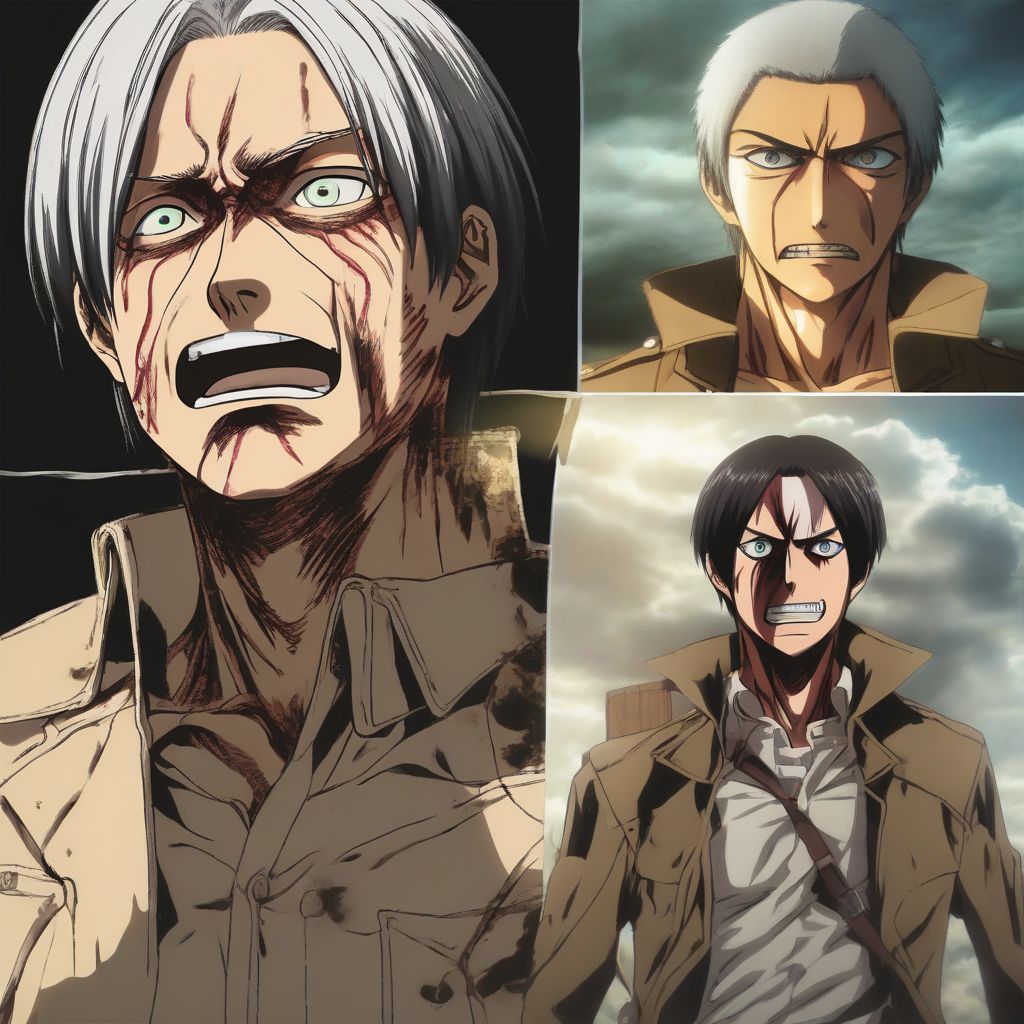Have you ever watched an anime and felt deeply connected to a character’s journey? Perhaps you were inspired by their growth, heartbroken by their struggles, or exhilarated by their triumphs. This connection we feel speaks to the power of well-crafted character arcs, a cornerstone of compelling storytelling in anime.
But how do we move beyond simply feeling these connections to articulating them? How can we discuss character arcs and growth in anime in a way that is engaging, insightful, and even analytical?
This guide will equip you with the tools to analyze and discuss character development in anime like a pro. Whether you’re looking to deepen your own understanding, engage in lively discussions with fellow fans, or even write insightful reviews and analyses, we’ve got you covered.
Understanding Character Arcs: The Building Blocks of Transformation
Before diving into analysis, let’s establish a common language. Character arcs refer to the internal journey a character undergoes throughout a story. They aren’t simply about external events, but rather how those events impact the character internally, leading to change, growth, or even regression.
Here are key elements to consider:
1. Starting Point: Who Are They at the Beginning?
Every journey begins with a single step, and understanding a character’s arc starts with knowing their initial state.
- What are their core values, beliefs, and motivations?
- What are their strengths and weaknesses, fears, and desires?
- What is their role in the story’s world?
For instance, consider Eren Yeager from Attack on Titan. Initially, he is impulsive, driven by a thirst for freedom, and fueled by a hatred for the Titans that confine humanity. This starting point is crucial for measuring how far he develops (or devolves) throughout the series.
2. Catalysts & Conflicts: The Engines of Change
Characters don’t exist in a vacuum. Events, challenges, and relationships act as catalysts, pushing them out of their comfort zones and forcing them to confront their flaws, beliefs, and ultimately, themselves.
- What significant events occur that challenge the character’s worldview?
- What internal and external conflicts do they grapple with?
- How do their relationships with other characters influence their journey?
Returning to Eren, the fall of Wall Maria and the loss of his mother serve as brutal catalysts. These events solidify his resolve to exterminate the Titans, setting him on a path fraught with conflict and moral ambiguity.
3. Transformation and Growth (or Lack Thereof)
The heart of any character arc lies in how they are transformed by their experiences.
- How have their values, beliefs, or motivations changed?
- What new strengths have they developed? What weaknesses have they overcome (or succumbed to)?
- Do they achieve their goals? If not, how do they cope?
The impact of the events Eren endures is undeniable. He grapples with the weight of his mission, wrestles with moral dilemmas, and undergoes a chilling transformation. Whether this transformation is seen as positive or negative is often subjective and open to interpretation.
 Eren Yeager Transformation
Eren Yeager Transformation
4. End Point: Coming Full Circle
The end of a character’s arc doesn’t necessarily mean the end of their story. However, it marks a point where we can assess the complete picture of their journey.
- How does the character compare to who they were at the start?
- What lessons have they learned (or failed to learn)?
- What impact does their journey have on themselves and the world around them?
Without delving into spoilers, Eren’s endpoint in Attack on Titan is a stark departure from his initial idealism, sparking endless debates about the nature of his choices and the consequences they unleash.
Engaging in Meaningful Discussion
Now that you have a framework for analyzing character arcs, let’s explore how to discuss them effectively:
-
Support Your Claims: Opinions are great, but backing them up with evidence from the anime strengthens your analysis. Refer to specific scenes, dialogue, and character interactions to illustrate your points.
-
Embrace Different Perspectives: Just as characters have unique journeys, so do viewers. Be open to hearing how others interpret a character’s growth and the choices they make. Disagreement can lead to insightful conversations.
-
Consider the Theme: Character arcs often serve a larger thematic purpose. How does a character’s journey relate to the overarching themes of the anime? For example, Eren’s arc in Attack on Titan heavily contributes to the exploration of freedom, war, and the cycle of hatred.
-
Look Beyond the Surface: Sometimes, the most compelling character growth happens subtly. Pay attention to smaller details – changes in behavior, interactions with others, or even their expressions – to uncover deeper layers of development.
-
Don’t Be Afraid to Dislike an Arc: Not all character arcs are created equal. It’s perfectly valid to dislike how a character develops or to find their choices frustrating. In fact, dissecting those feelings can lead to a richer understanding of your own preferences and what you value in storytelling.
Expanding Your Anime Vocabulary: Types of Character Arcs
Familiarizing yourself with common character arc archetypes can enrich your discussions:
-
Positive Arcs: The character overcomes obstacles, learns valuable lessons, and ultimately becomes a better version of themselves. (e.g., Naruto Uzumaki from Naruto)
-
Negative Arcs: The character succumbs to their flaws, makes destructive choices, and may end up worse than they started. (e.g., Griffith from Berserk)
-
Flat Arcs: The character remains largely unchanged throughout the story, often serving as a point of contrast to other characters’ growth. (e.g., Speedwagon from Jojo’s Bizarre Adventure)
-
Transformative Arcs: The character undergoes a radical shift in personality, values, or motivations, often as a result of a traumatic experience. (e.g., Thorfinn from Vinland Saga)
Connecting with the Fan Community
Discussing character arcs is even more rewarding when shared with others. Here are some ways to connect with fellow anime enthusiasts:
-
Online Forums: Websites like Reddit (r/anime) and MyAnimeList offer dedicated spaces for fans to discuss specific anime and characters.
-
Social Media: Use hashtags like #characterdevelopment or #animearcs to find and engage in conversations on platforms like Twitter and Tumblr.
-
Anime Conventions: Conventions often host panels and discussions about storytelling in anime, providing opportunities to share your thoughts and hear from experts.
Conclusion: The Enduring Power of Character Journeys
Character arcs are the lifeblood of anime, breathing life into stories and forging emotional connections between viewers and the animated world. By learning to recognize and analyze these journeys, you not only deepen your appreciation for the craft of storytelling but also unlock a richer, more engaging experience as a fan.
So, the next time you find yourself captivated by an anime, take a moment to reflect on the characters’ journeys. What challenges did they face? How did they change? And most importantly, what does their growth (or lack thereof) tell us about the human experience?
Remember, the most rewarding discussions are often those that leave us with more questions than answers, inspiring us to delve deeper into the complex and fascinating world of anime.
Now, go forth and share your newfound knowledge with the anime community! What are some of your favorite character arcs and why? We’d love to hear your thoughts in the comments below!
For more insights into the world of anime and manga, check out our articles on The Role of Fan Communities in Shaping the Anime and Manga Industry and The Role of Character Development in Manga Recommendations.
[amazon bestseller=”anime character design”]
